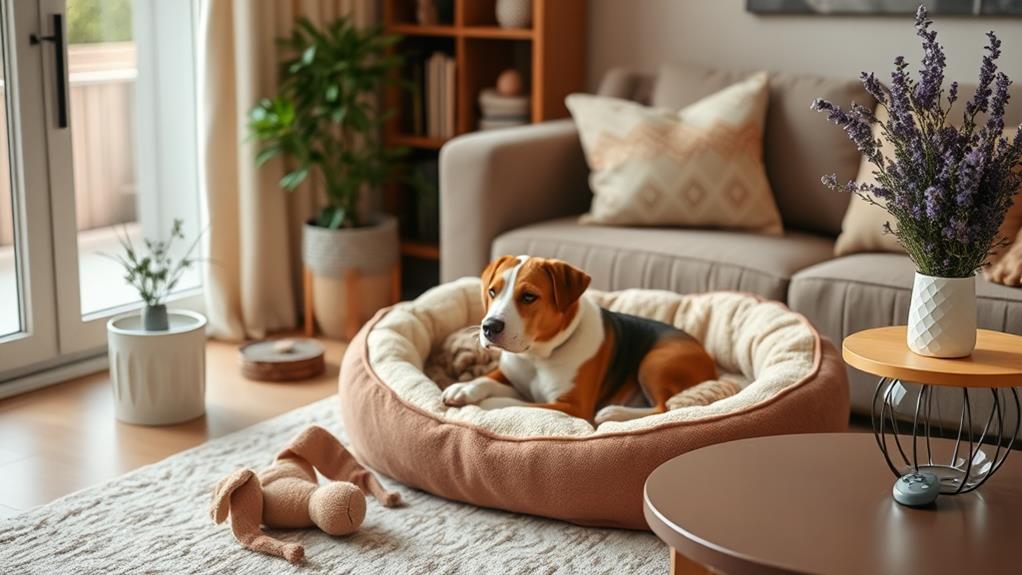To conquer your dog's separation anxiety, start by understanding the signs, like excessive barking or destructive behavior. Use gradual desensitization techniques by briefly leaving the room and increasing the time away gradually. Establish a consistent routine for feeding, walks, and playtime to create stability. Designate a cozy safe space filled with familiar items to help your pup feel secure. Finally, utilize positive reinforcement by rewarding calm behavior and teaching independence. With these tips, you can help your dog become more confident. Want to uncover more effective strategies to ease their anxiety? There's plenty to explore ahead!
Understand the Signs of Anxiety
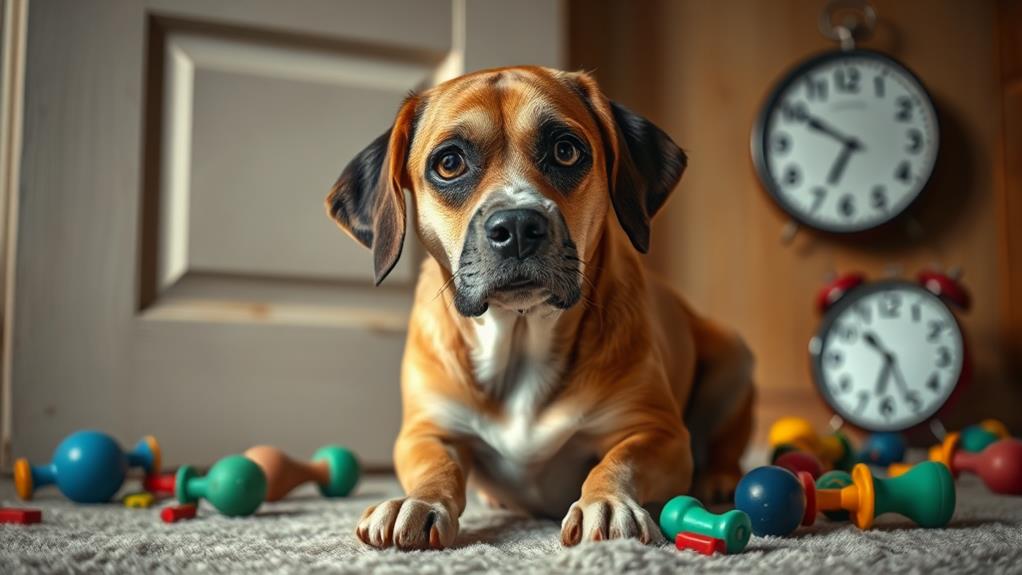
Recognizing the signs of anxiety in your dog is pivotal for effective training and overall well-being. Dogs can't tell you when they're feeling stressed or scared, so you need to be vigilant.
Look for excessive barking, whining, or howling, which often signals distress. If your dog is pacing, unable to settle, or frequently changing positions, it's a clear indication that something's bothering them.
Watch for physical signs too, like panting, drooling, or trembling. These behaviors can stem from anxiety rather than heat or exertion. You might also notice your dog hiding, seeking refuge in small spaces, or trying to avoid certain people or situations.
Another key sign is destructive behavior; if your dog chews furniture or digs at doors, it could be a cry for help. Additionally, pay attention to their appetite—loss of interest in food can be a telltale sign of anxiety.
Understanding these signs helps you respond appropriately to your dog's needs. By addressing anxiety early on, you'll set the stage for effective training, ultimately leading to a happier, healthier pet.
Gradual Desensitization Techniques
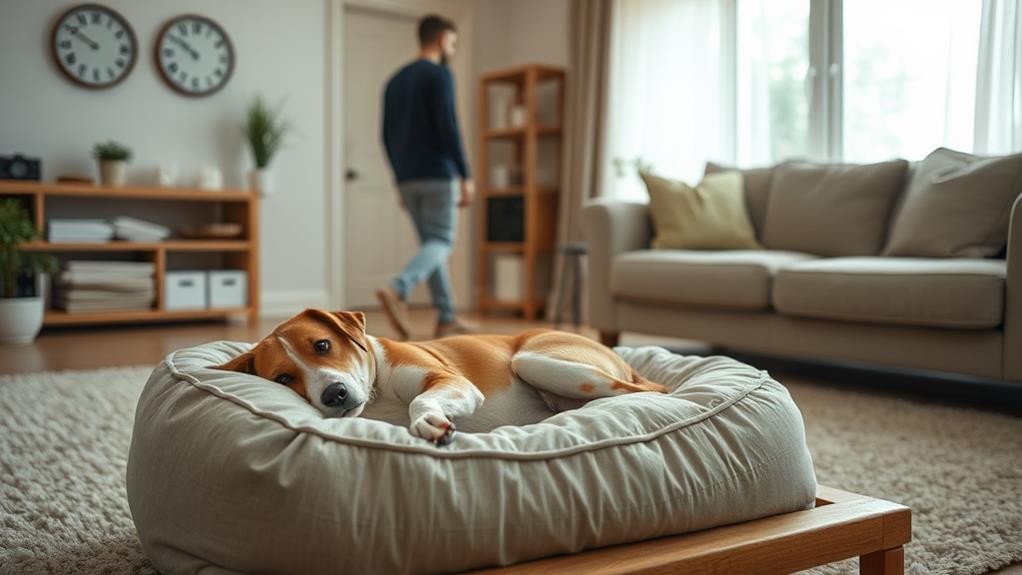
Gradual desensitization techniques can be incredibly effective in helping your dog overcome anxiety triggers. This method involves exposing your dog to the source of their anxiety in a controlled and gradual manner. Start with low-level exposure, and as your dog becomes more comfortable, slowly increase the intensity or duration of the exposure. Here's a simple table to guide you through the process:
| Step | Exposure Level |
|---|---|
| 1 | Stay nearby (2 minutes) |
| 2 | Leave the room briefly |
| 3 | Increase time outside |
| 4 | Use a familiar toy |
| 5 | Practice with a friend |
During each step, watch your dog's body language and comfort level. If they seem anxious, back off to a previous step until they feel safe again. Reward your dog with treats or praise when they remain calm. This positive reinforcement helps them associate the anxiety trigger with good experiences. Remember, patience is key! With consistency, your dog can learn to manage their anxiety more effectively.
Establish a Consistent Routine
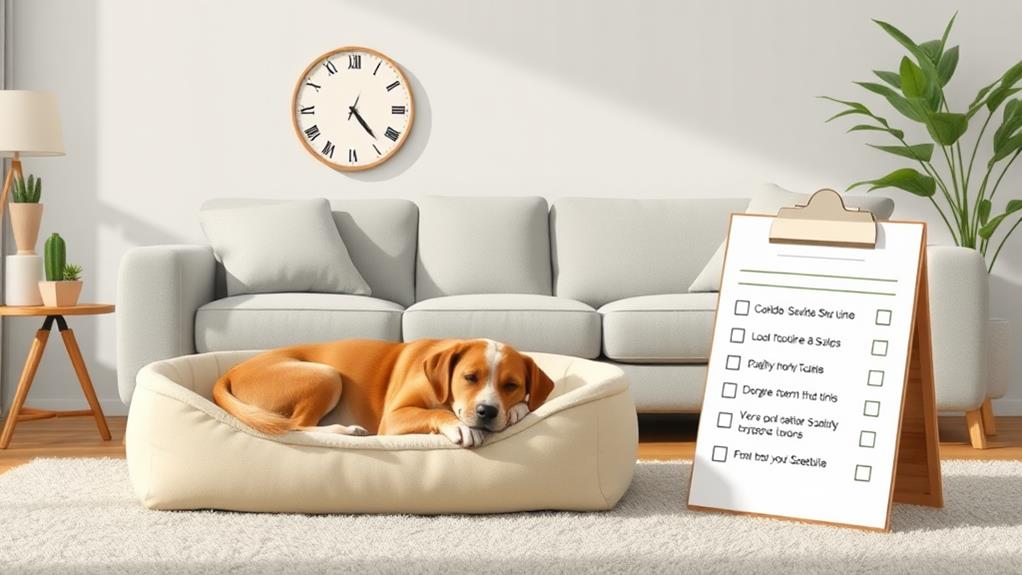
Creating a consistent routine for your dog can vastly enhance their sense of security and stability, especially after working on anxiety through gradual desensitization. Dogs thrive on predictability, and a structured daily schedule can help them feel more at ease during times of separation.
Start by establishing regular feeding times, walks, and play sessions. This predictability not only helps your dog know what to expect but also reinforces good behavior. When your dog knows when they'll be fed or exercised, they're less likely to feel anxious about when they'll get attention.
Additionally, try to keep your departures and arrivals consistent. If you leave at the same time each day and have a specific routine for saying goodbye, your dog will learn to anticipate and adapt to these events. Avoid long, emotional farewells and keep your departures low-key to minimize anxiety.
Lastly, incorporate training sessions into your routine. Short, positive training exercises can provide mental stimulation and reinforce your bond. By maintaining a consistent routine, you're not just helping your dog feel more secure; you're also fostering a happier, healthier relationship with them.
Create a Safe Space
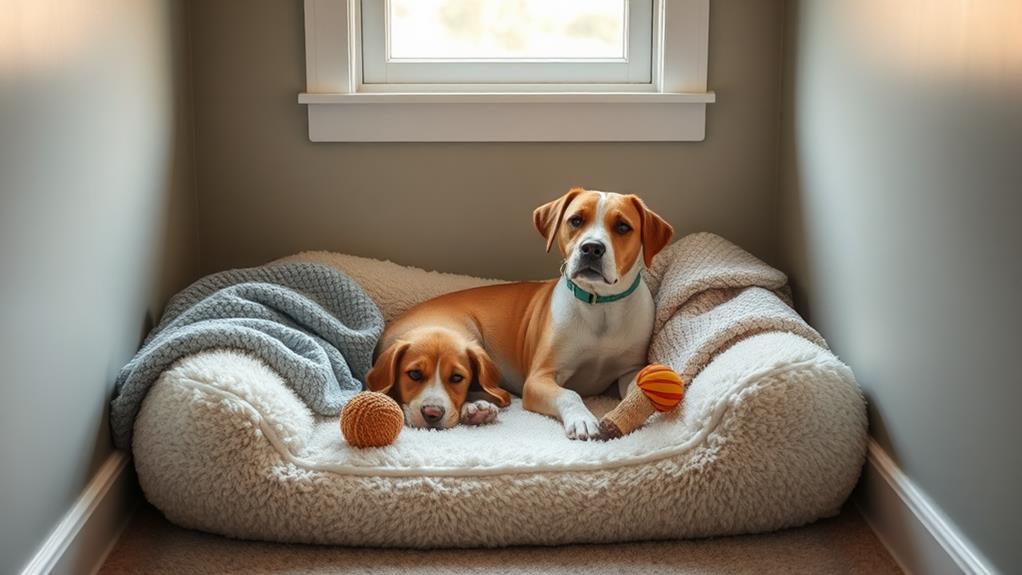
Designate a cozy corner in your home where your dog can retreat when they need a break. This safe space should be comfortable and inviting, filled with familiar items like their favorite blanket or toys. Choose a quiet spot away from the hustle and bustle of daily life, ensuring it offers a sense of security.
You can use a crate, a specific room, or even a designated area with pet gates. Make sure it's easily accessible so your dog can go there whenever they feel anxious. Adding a soft bed or cushion can enhance their comfort, making it a perfect haven.
Consider using calming scents, like lavender, to help create a soothing atmosphere. You might also include a few interactive toys that can keep them occupied while they settle down.
It's essential to allow your dog to explore this space on their own terms. Encourage them to use it by praising them when they do. Over time, your dog will associate this cozy corner with safety and comfort, helping to reduce their anxiety during stressful moments.
Use Positive Reinforcement
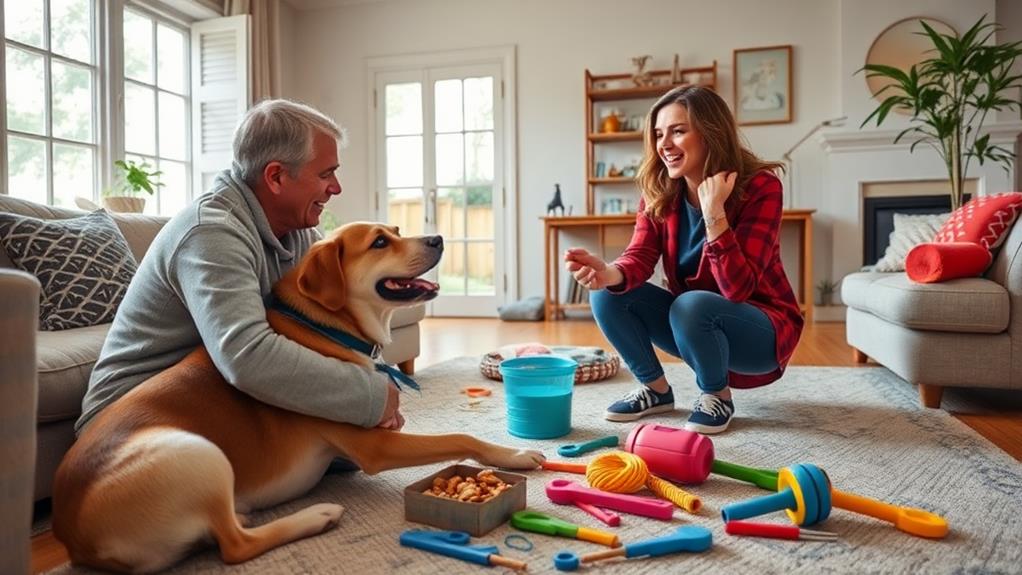
A safe space helps your dog feel more secure, and that comfort can be reinforced through positive training methods. Using positive reinforcement means rewarding your dog for good behavior, which builds trust and encourages them to repeat those actions. When your pup remains calm in their safe space, praise them enthusiastically. This could be through verbal affirmations, gentle petting, or treats.
Timing is pivotal; reward them immediately after the desired behavior so they make the connection. If your dog struggles with being alone, start with short departures. When you return and they've stayed calm, shower them with praise. This reinforces the idea that being alone can be a positive experience.
Avoid punishing your dog for anxiety-related behaviors, as that can exacerbate their stress. Instead, focus on creating a routine that includes plenty of positive interactions. Incorporate training exercises that promote independence, like teaching them to settle in their safe space while you're nearby. Gradually increase your distance and duration. Over time, your dog will associate being alone with rewards, making separation less formidable for both of you. Emphasizing positive reinforcement will create a healthier and happier environment for your canine companion.
Frequently Asked Questions
Can Separation Anxiety Be Diagnosed by a Veterinarian?
Yes, a veterinarian can diagnose separation anxiety in your dog through behavioral assessments and by ruling out other medical issues. If you suspect anxiety, it's best to consult your vet for guidance and treatment options.
What Breeds Are More Prone to Separation Anxiety?
Certain breeds, like Labrador Retrievers, Border Collies, and Bichon Frises, tend to be more prone to separation anxiety. If you're considering a dog, think about how their temperament might fit your lifestyle and situation.
Are There Medications for Canine Separation Anxiety?
Yes, there are medications for canine separation anxiety. Your vet can prescribe anti-anxiety medications or natural supplements to help your dog cope. It is crucial to combine these with training for the best results.
How Long Does It Take to See Improvement?
You might feel anxious waiting for results, but improvement often comes within weeks. Stay consistent with your approach, and you'll likely notice positive changes in your dog's behavior as trust builds and anxiety lessens.
Can I Help My Dog With Separation Anxiety While at Work?
Absolutely, you can help your dog with separation anxiety while at work. Try providing engaging toys, setting a consistent routine, and gradually increasing your time away to ease their anxiety and build confidence.
Conclusion
You'd think leaving your pup alone for a few minutes would be a walk in the park, but with separation anxiety, it's more like a marathon. By understanding their signs and using the tips above, you'll turn those anxious barks into happy wags. Remember, it's all about patience and consistency. So, while you're conquering their anxiety, you might just find yourself feeling a little more relaxed too—who knew training could be therapeutic for you both?

